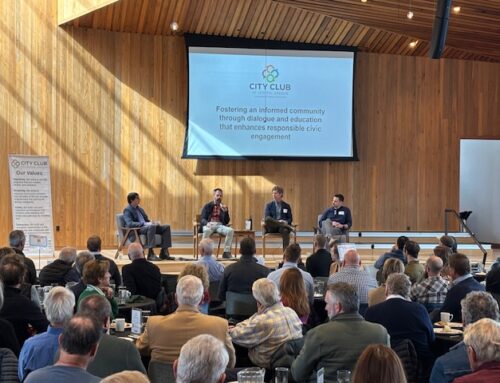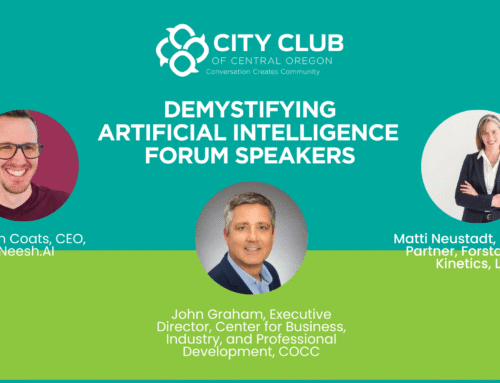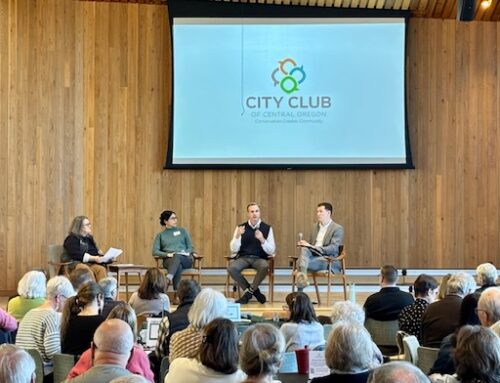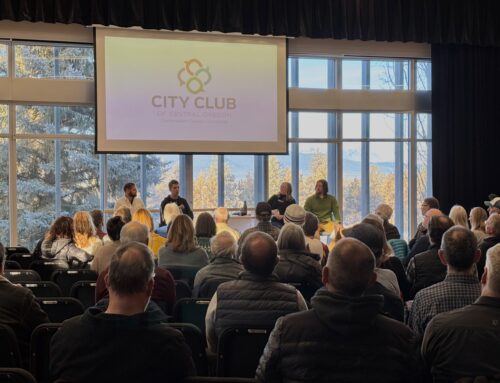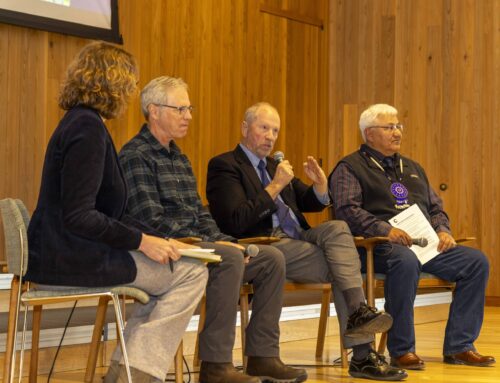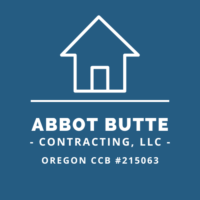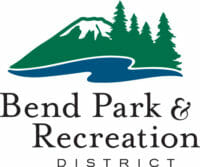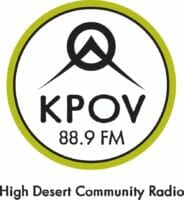—
On Thursday, March 20, a sold-out audience came to listen to experts speak about a topic that remains in the forefront of local resident’s mind – sustainable growth.
Mark Buckley, Partner, ECONorthwest started the conversation by looking at growth through the lens of assets – mountain, rivers, days of sunshine – and capital investments like the Old Mill and our extensive trail systems that make our region a special place. And while Bend is growing, the ratio of visitors and locals remains the same and it is these assets that turn yesterday’s tourists into today’s residents.
Mark also gave a comparison of Bend to peer communities including Bozeman, Montana, South Lake Tahoe, California, and Portland, Oregon.
Bozeman, although smaller than Bend, has seen more population growth the Bend. One interesting fact is that both Bend and Bozeman have almost identical median home values. Bozeman is very intentional about their pro-growth strategy where they combine a focus on tourism with building opportunities for a skill-based economy to flourish.
Another peer, South Lake Tahoe, has actually seen a population decline due to the challenges of economic diversification in the heavily touristed are with unique spatial constraints.
And lastly, Portland, Oregon, that is experiencing challenges with a slowing of growth. These challenges include maintaining public services and investments funded through tax payers and ensuring a return on investment in those services.
Brian Rankin, Senior Strategist for the City of Bend, alluded to the support that the community has in approve bonds for new schools, libraries, and parks. Brian gave an overview of State of Oregon planning laws on how cities grow. Bend has been mandated to plan for 32,000 dwellings units in the next 30 years – roughly 1/3 need to be affordable which is likely the biggest challenge for stakeholders like the City, County, and partner agencies.
The City of Bend itself has a comprehensive plan approved in 2016 that outlines the approach for expansion and redevelopment. Part of this plan included expanding the urban growth boundary but making sure that infill projects were part of the equation. Currently, we are seeing the first of those vertical/mixed use facilities that were agreed upon in a 2016 plan. Brian noted that meeting state requirements are both a technical and social challenge as rules are becoming more directed and intense.
Henry Stroud, Principal Planner for Bend Park and Recreation District, commented that although a separate district, that he and his team works very closely with the City of Bend where they coordinate long range plans and development codes. The district itself often works as a developer and feels the stress of the high cost of land. One approach the district takes is acquiring land on the urban fringe which is often 100 times cheaper than land centrally located in the city. And with the focus on development in the core area of Bend, the district has had to rethink what a park looks like and the ways they measure success. Moving from a metric of number of parks or miles of trails per person, the district is focusing more on geographic distribution and access, and not just the number of parks.
Although growth will continue to be a challenge, Mark Buckley noted that Bend has a “special sauce” of private and public investment that establishes an area where people live because of their desire to do so.
Forum recording will be posted shortly.

